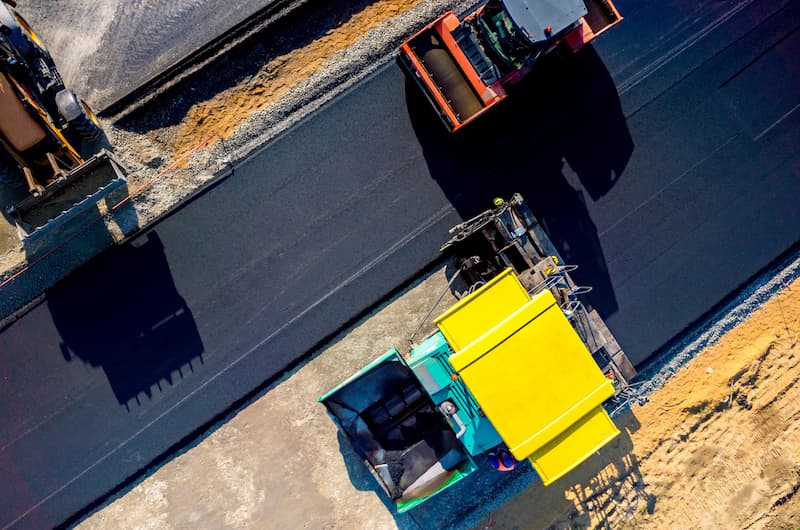Our A1 Professional Asphalt & Sealing Llc Statements
Our A1 Professional Asphalt & Sealing Llc Statements
Blog Article
A1 Professional Asphalt & Sealing Llc - Questions
Table of ContentsIndicators on A1 Professional Asphalt & Sealing Llc You Need To KnowA1 Professional Asphalt & Sealing Llc for BeginnersFascination About A1 Professional Asphalt & Sealing LlcThe Facts About A1 Professional Asphalt & Sealing Llc UncoveredThe smart Trick of A1 Professional Asphalt & Sealing Llc That Nobody is Talking About

The oil in an auto engine is not simply oil. It has a selection of ingredients to enhance the vehicle's efficiency. These consist of polymers, thickness modifiers, warmth stabilizers, extra lubricants, and put on ingredients. The REOB includes all the ingredients that were in the waste oil in addition to the wear steels from the engine (primarily iron and copper).
Nonetheless, by making several blends using different REOB examples and different asphalt binders, the variants mostly can be balanced out. A number of States provided samples of recognized REOB composition to TFHRC scientists, who assessed the examples to contrast the percent of added (understood) REOB to the located (evaluated) quantity. The analyses showed a similar portion of added and found REOB.
The Ultimate Guide To A1 Professional Asphalt & Sealing Llc
None of those States recognized that the asphalt they were buying contained REOB. One State urged its samples had no REOB - https://www.openstreetmap.org/user/a1asphaltseal.
Of the 1,532 examples evaluated, 12 percent included REOB, and some included substantially high degrees of it at 1020 percent. The highest degree was 34 percent in an example from Texas, which TxDOT had made use of in a patching substance. This testing additionally exposed the presence of phosphoric acid in 11 percent of the samples, and 2 percent included ground tire rubber.
Two years back at TRB's yearly meeting, the Federal scientists held an REOB workshop and presented the searchings for of their laboratory evaluations to a standing room-only crowd. Some firms do not especially prohibit REOB, they do impose physical tests that preclude its useeffectively a ban. Others do not prohibit it by requirements, but have contracts with asphalt vendors to prevent using REOB
What Does A1 Professional Asphalt & Sealing Llc Do?
A handful do permit REOB, some within specific limits. Ohio and Texas limit degrees to less than 5 percent of the asphalt. To develop a reliable test technique that all States can make use of, the TFHRC scientists established a round-robin examination strategy. The individuals are 11 State highway firms (Illinois, Massachusetts, Minnesota, Mississippi, Montana, North Carolina, Oklahoma, South Carolina, Texas, Vermont, and Wyoming), 2 independent screening labs, the Ministry of Transportation in Ontario, Queen's College in Ontario, and an Ontario paving service provider.
In total, the scientists prepared and delivered 720 blends. The participants are testing the samples independently using the guidelines offered by the TFHRC researchers. The round-robin testing is nearly finished, and TFHRC is in the procedure of collecting the outcomes. The output will be a recommended AASHTO examination approach that any type of look at this site State can take on and use (asphalt paving repairs).
The sidewalk with REOB, which lies 0.6 mile (1 kilometer) from the pavement without REOB, has the same subgrade, traffic density, and climate. The sector of Highway655 with 5 to 10 percent REOB showed considerable cracking. In this example, the presence of REOB was the determined reason for cracking at a reduced temperature levels.
An area of test pavement in Minnesota (MN1-4) located to have REOB likewise cracked too soon. The sidewalk done well for the first 3 to 4 years, but after that began to break.
The A1 Professional Asphalt & Sealing Llc Diaries
The examinations were not considerable, however they revealed that at degrees of 6 percent or even more, the tensile stamina of the asphalt went down dramatically. At a level of 3.5 percent REOB, the variation in the physical examination methods was greater than the impact of REOB. It was hard for researchers to evaluate whether REOB was existing. https://giphy.com/channel/a1aspha1tseal.

One binder specification taken into consideration is the distinction between the reduced temperature level vital specification temperature level for rigidity (S) in the flexing beam rheometer and the bending beam of light rheometer creep slope (m-value) kept in mind as Tcritical. Two independent study groups, one from AASHTO and the other from the Asphalt Institute, concluded that even more research study is needed on the use of REOB in asphalt.
Formerly, all asphalt screening determined design residential properties such as tightness. These tests do not show what products had actually been added to the asphalt.

The Buzz on A1 Professional Asphalt & Sealing Llc
These outcomes show there are weaknesses in the standardized engineering screening protocols that may be exploited. The producer may have an economic advantage and the product passes all the standardized tests, but the product might not be useful to guaranteeing long-lasting efficiency. To resolve this problem and the development of new asphalt additives and extenders, TFHRC is starting a study program to use portable spectroscopic tools, x-ray fluorescence spectroscopy, and Fourier transform infrared spectroscopy to allow evaluations to be carried out in the area instead of having to take examples back to the lab.
Report this page